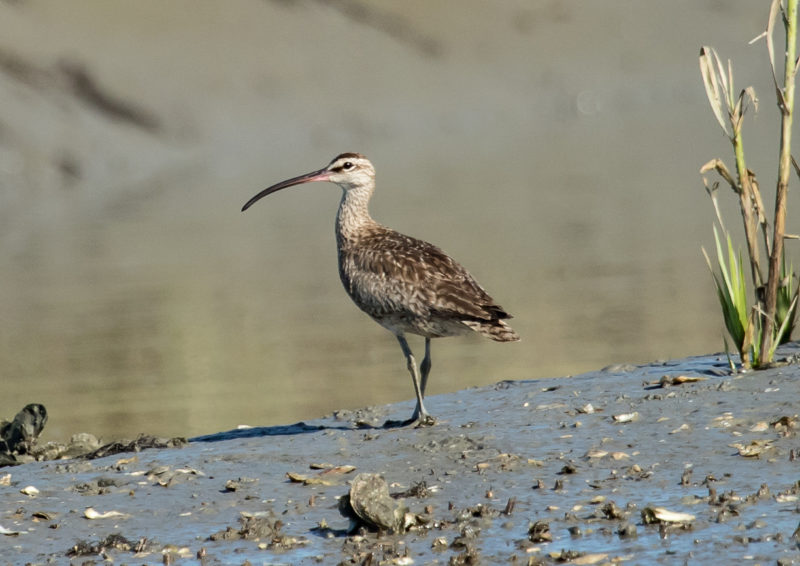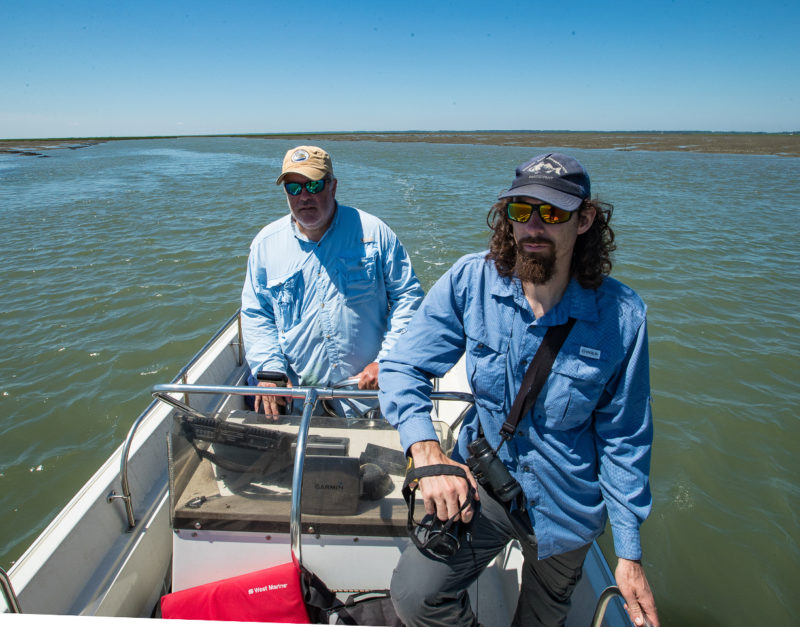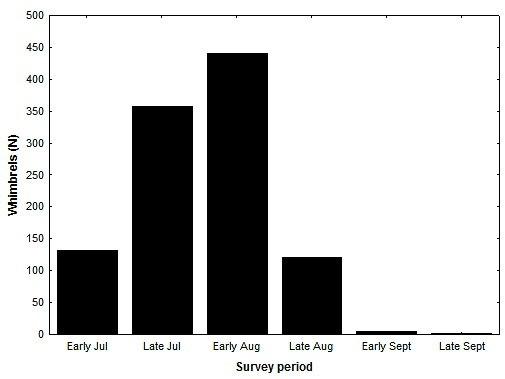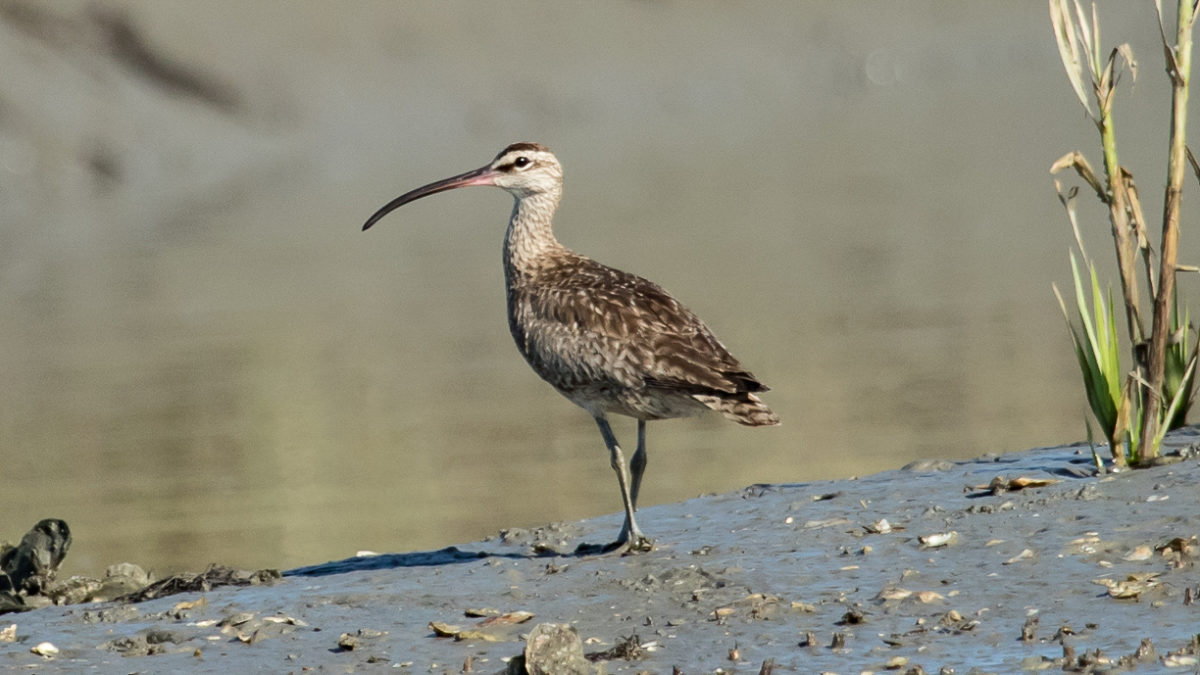CCB surveys whimbrels along the Delmarva Peninsula in fall

2021 Peregrine Season
October 4, 2021
NEW PAPER: Breeding phenology of the eastern black rail
October 4, 2021By Bryan Watts
10/3/2021
Whimbrel populations (Hudson Bay, Mackenzie River) that utilize the Western Atlantic Flyway are believed to be declining by 4% annually since at least the early 1990s. The Hudson Bay breeding population is believed to have high exposure to mortality during the nonbreeding season and may be shouldering the brunt of observed declines. The lower Delmarva Peninsula appears to support the largest fall staging ground for Hudson Bay whimbrels before their trans-Atlantic crossing. In an effort to learn more about fall staging ecology and phenology, CCB established two boat survey routes for whimbrels along the seaside of the Delmarva. Routes were run every other week from early July through the end of September.

Whimbrels were observed in numbers along the edges of tide guts but larger concentrations were counted within extensive mudflats where they spread out over the surface and fed on fiddler crabs. Video of foraging whimbrels on mudflats was collected to estimate feeding rates. Whimbrel numbers within survey routes reached a peak in early August and then departed through the second half of August. The survey missed early arrivals suggesting that the survey window should be extended into the second half of June. One of the objectives of the fall effort was to establish a standardized survey that could sample both hatch-year and adult whimbrels in order to evaluate year-to-year variation in adult to juvenile ratios and estimate cohort strength. However, no hatch-year whimbrels were detected during the first year of survey.


The annual cycle of whimbrel populations play out on a large geographic scale. Halting and reversing population declines will require collaboration on research efforts to fill information gaps and coordination of management activities across the flyway. Based on the sampling of birds within two small survey routes, the lower Delmarva likely supports tens of thousands of birds during August. Working with whimbrels within this key site during the fall period is beginning to fill in an important information gap.




